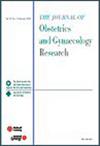Analysis of factors influencing endometrial polyp recurrence after hysteroscopic polypectomy
Abstract
Objective
To analyze the factors influencing the recurrence of endometrial polyps after hysteroscopic polypectomy.
Methods
A retrospective analysis was conducted on the clinical data of 925 patients who underwent hysteroscopic polypectomy for endometrial polyps at the Affiliated Hospital of Shaanxi University of Chinese Medicine from January 2017 to December 2023. All patients were followed up for 6 months, and the factors influencing the recurrence of endometrial polyps after hysteroscopic polypectomy were analyzed.
Results
The recurrence rate of endometrial polyps after hysteroscopic polypectomy was 7.78% (72/925). Significant differences were observed between the recurrence and non-recurrence groups in terms of body mass index (BMI), menopausal status, levels of luteinizing hormone (LH), estradiol (E2), follicle-stimulating hormone (FSH), endometrial thickness, and polyp diameter (p < 0.05). Multivariate logistic regression analysis showed that high BMI, elevated levels of LH, E2, and FSH, increased endometrial thickness, and larger polyp diameter were independent risk factors for the recurrence of endometrial polyps after hysteroscopic polypectomy (odds ratio >1, p < 0.001).
Conclusion
High BMI, elevated levels of LH, E2, and FSH, increased endometrial thickness, and larger polyp diameter increase the risk of recurrence of endometrial polyps after hysteroscopic polypectomy.

 求助内容:
求助内容: 应助结果提醒方式:
应助结果提醒方式:


